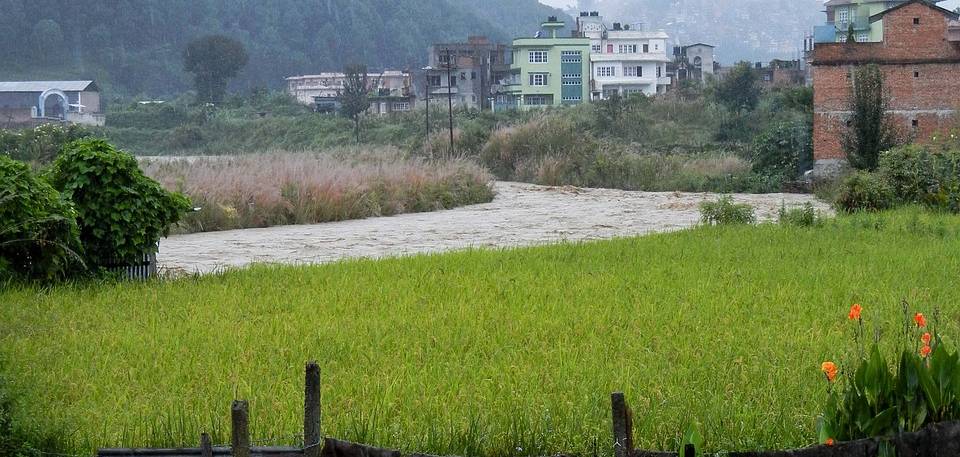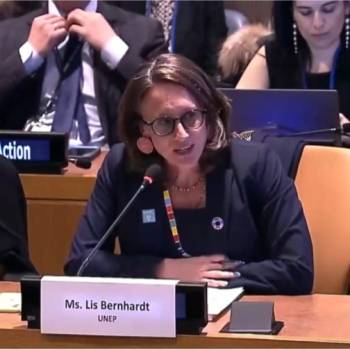
La tendance au réchauffement à long terme s’accentue. L’Asie est la région du monde la plus exposée aux catastrophes. Plus de 80 catastrophes ont touché 50 millions de personnes et fait plus de 5 000 victimes. La sécheresse et les inondations sont les risques les plus courants. La fonte des glaciers menace la sécurité alimentaire et hydrique future.
Les phénomènes météorologiques extrêmes et les effets du changement climatique se font de plus en plus sentir en Asie, où sécheresses et inondations se sont succédé en 2022, détruisant des vies et des moyens de subsistance. Selon un nouveau rapport de l’Organisation météorologique mondiale (OMM), la fonte des glaces et des glaciers et l’élévation du niveau de la mer risquent d’aggraver les perturbations socio-économiques à l’avenir.
L’Asie, qui est le continent possédant la plus grande masse terrestre s’étendant jusqu’à l’Arctique, se réchauffe plus rapidement que la moyenne mondiale. Selon le rapport de l’OMM sur l’état du climat en Asie en 2022, la tendance au réchauffement en Asie entre 1991 et 2022 a presque doublé par rapport à la période 1961-1990.
En 2022, l’Asie a été frappée par 81 catastrophes liées au temps, au climat et à l’eau, dont plus de 83 % étaient des inondations et des tempêtes. Selon le rapport, plus de 50 millions de personnes ont été directement touchées, plus de 5 000 ont perdu la vie et les dommages économiques ont dépassé les 36 milliards de dollars des États-Unis (É.-U.). Par ailleurs, de violentes tempêtes de poussière se sont abattues sur une grande partie de l’Asie aride, et en Asie occidentale, plusieurs d’entre elles ont mis en péril la vie des populations.
«Ce rapport fait le bilan de la situation climatique en Asie en 2022, des phénomènes extrêmes et de leurs impacts socio-économiques. En 2022, de nombreuses régions d’Asie ont connu des conditions plus sèches que la normale, voire la sécheresse. La Chine, en particulier, a souffert d’une sécheresse prolongée qui a nui à la disponibilité de l’eau et à l’approvisionnement en électricité. Les pertes économiques dues à la sécheresse qui a touché de nombreuses régions de Chine ont été estimées à plus de 7,6 milliards de dollars É.-U. Le Pakistan, à l’inverse, a été frappé par des inondations catastrophiques», a déclaré le Secrétaire général de l’OMM, M. Petteri Taalas.
«La plupart des glaciers des hautes montagnes asiatiques ont subi une perte de masse sévère en raison des conditions exceptionnellement chaudes et sèches de 2022. Cela aura des conséquences majeures sur la sécurité alimentaire et hydrique et sur les écosystèmes», a-t-il poursuivi.
Ce rapport, qui fait partie d’une série de rapports régionaux de l’OMM sur l’état du climat, a été publié à l’occasion d’une réunion du Comité de la réduction des risques de catastrophe de la CESAP.
«Le Plan d’action exécutif de l’Initiative en faveur d’alertes précoces pour tous, élaboré par le Secrétaire général de l’ONU et dont la mise en œuvre est copilotée par l’OMM et le Bureau des Nations Unies pour la prévention des catastrophes (UNDRR), est d’autant plus important en Asie, qui est la région du monde la plus touchée par les phénomènes violents et où les effets des catastrophes transfrontières liées au climat sont en augmentation», a déclaré Mme Armida Salsiah Alisjahbana, Secrétaire générale adjointe de l’ONU et Secrétaire exécutive de la CESAP.
Le rapport est accompagné d’une présentation interactive qui met l’accent sur l’agriculture et la sécurité alimentaire. L’augmentation attendue de la fréquence et de la gravité des phénomènes extrêmes dans une grande partie de l’Asie aura des répercussions sur l’agriculture, qui joue un rôle clé dans tous les plans d’adaptation au climat.
«La prévision axée sur les impacts, les alertes précoces pour tous et leur traduction en actions anticipées sont des exemples de l’adaptation transformatrice nécessaire pour renforcer la résilience des systèmes alimentaires en Asie», a précisé Mme Salsiah Alisjahbana.
Points clés
En 2022, la température moyenne en Asie a été la deuxième ou troisième température la plus élevée jamais enregistrée. Elle a dépassé d’environ 0,72 °C la moyenne de la période 1991‑2020, qui était elle-même supérieure d’environ 1,68 °C à celle de la période de référence de l’OMM en matière de changement climatique, 1961-1990.
La sécheresse a touché de nombreuses parties de la région et a appauvri les ressources en eau disponibles. En 2022, les pertes économiques dues à la sécheresse en Chine, par exemple, ont été estimées à plus de 7,6 milliards de dollars É.-U.
De graves inondations ont frappé le Pakistan, causant d’importantes pertes humaines et économiques. Les trois premières semaines de mousson, le Pakistan a enregistré 60 % des précipitations totales normales de la mousson. Selon l’Autorité nationale de gestion des catastrophes (NDMA), plus de 33 millions de personnes, soit près de 14 % de la population pakistanaise de 2022, ont été touchées.
Les glaciers des hautes montagnes d’Asie ont perdu beaucoup de volume au cours des 40 dernières années, et cette perte s’accélère. En 2022, des conditions exceptionnellement chaudes et sèches ont exacerbé la perte de masse de la plupart des glaciers. Le glacier Urumqi N° 1, dans l’est du Tien Shan, a enregistré le deuxième bilan de masse négatif le plus élevé (–1,25 mètre d’équivalent eau) depuis le début des relevés, en 1959.
Océans. La région présente une tendance générale au réchauffement en surface des océans depuis 1982, début des séries chronologiques. Dans le nord-ouest de la mer d’Arabie, la mer des Philippines et les mers situées à l’est du Japon, les taux de réchauffement dépassent 0,5 °C par décennie, ce qui est environ trois fois plus rapide que le taux de réchauffement moyen en surface des océans au niveau mondial.
En septembre, des vents record et de fortes précipitations associés au typhon Nanmadol ont été enregistrés dans plusieurs stations du Japon. Nanmadol a fait cinq victimes, touché plus de 1 300 personnes et causé des dommages économiques estimés à plus de 2 milliards de dollars É.-U.
Selon la base de données EM-DAT, 81 catastrophes naturelles ont été recensées en Asie en 2022, dont plus de 83 % étaient des inondations et des tempêtes. Ces événements ont fait plus de 5 000 décès, dont 90 % étaient liés aux inondations. Dans l’ensemble, les catastrophes naturelles ont eu un impact direct sur plus de 50 millions de personnes et ont causé des dommages s’élevant à plus de 36 milliards de dollars É.-U.
En 2022, les pertes économiques dues aux catastrophes liées aux inondations ont dépassé la moyenne de la période 2002-2021. Les pertes les plus importantes ont été enregistrées au Pakistan (plus de 15 milliards de dollars É.-U.), puis en Chine (plus de 5 milliards de dollars É.‑U.) et en Inde (plus de 4,2 milliards de dollars É.-U.). En 2022, les pertes économiques liées à la sécheresse constituaient la deuxième catégorie la plus importante de pertes, avec 7,6 milliards de dollars É.-U. de dommages (principalement en Chine). Ce chiffre dépasse de près de 200 % la moyenne de la période 2002-2021 (2,6 milliards de dollars É.‑U.).
Le renforcement de la résilience des systèmes alimentaires est une priorité absolue en Asie, comme le soulignent les contributions déterminées au niveau national de la plupart des Parties à l’Accord de Paris qui sont Membres du Conseil régional II de l’OMM. La surveillance du climat passé et actuel et la fourniture de prévisions aux échelles de temps météorologiques et climatiques sont des éléments clés de services d’alerte précoce efficaces pour l’agriculture et la sécurité alimentaire.
L’Organisation météorologique mondiale est l’organisme des Nations Unies qui fait autorité pour les questions relatives au temps, au climat et à l’eau.
Publié le 29/07/2023 12:52








Commentaires